Ulysse Nardin's new star: Genghis Khan
Ulysse Nardin has a rich and long tradition as makers of complicated watches with sonnerie and/or repeaters, and automatons. One has to think of the famous Jungle repeater, which features an incredibly detailed jungle scene on its dial, made of enamel cloisonné, with moving animals. Or the 'Triple Jack', with three automatons on its dial. However, during the last years, UN's fame was mostly founded on its practical watches, which - while having complicated mechanics in their cases - are perfectly fit for everyday use. The wonderful Perpetual GMT being but a prominent example.
This year, Rolf Schnyder, the man behind Ulysse Nardin, was proud to present UN's zenith in complexity, a watch beyond all considerations of practicability, a piece of art more than a mere timepiece; the 'Genghis Khan', world's first wristwatch featuring a Westminster chime with minute repeater, automatons and tourbillon.
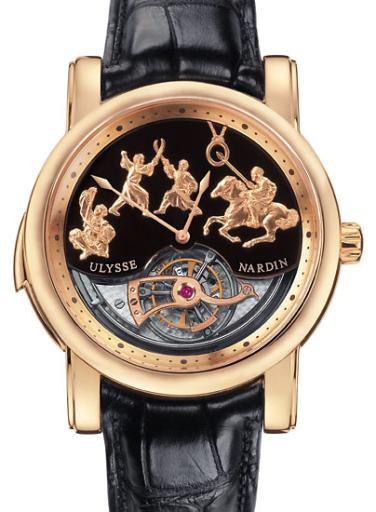
At the very first sight, this watch impresses with its striking design. A dial made of massive onyx features four figures, meticulously chased from gold. The figures show Mongolian warriors, thus explaining the watch's strange name, which remembers the founder of the largest empire in humankind's history, Genghis Khan (born 1155, or 1162, or 1167; died 1227). Each time the Westminster chimes or the repeater is engaged, the figures are fighting with their characteristically curved swords or trying to catch a small ring with a spear, while riding a impressively crafted horse.
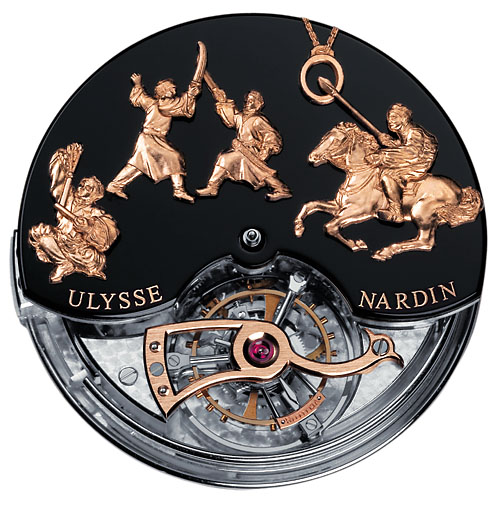
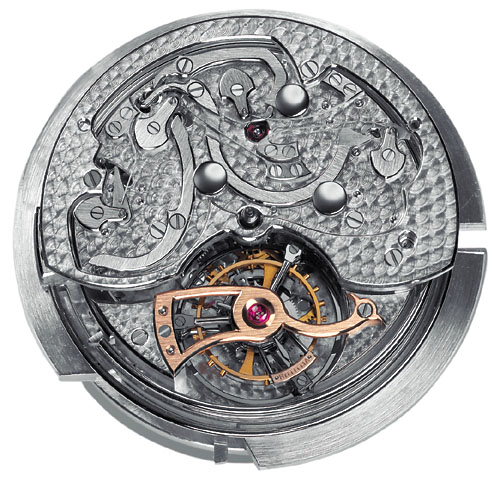
The mechanisms for moving the automatons are located under the dial.
Yet the automatons are but one of the 'Khan's' features, albeit the most fascinating ones. The minute tourbillon is another. This watch is the first tourbillon produced by Ulysse Nardin since several years. and what a piece of art it is! Although it is not apparent from tha watch's name, the tourbillon quotes another important tradition and one of the most famous watchmakers: James Caesar Pellaton (1873 - 1954), who followed his equally well-known father, Albert Pellaton-Favre, as important maker of tourbillons. What distinguished James from his father was his scientific and theoretical approach towards his profession. This made him a perfect candidate when in 1903 the famous Horological School in Le Locle searched able teachers in escapement-making. Being apt at watchmaking theory as well, he authored a textbook on clock escapements which is used at Swiss horological schools until today and was translated into several languages. After 22 years of teaching he became director of the school in 1925 and remained in this position until his retirement in 1939. He was a founding member of the Swiss Chronometric Society, was awarded the honorary doctor’s degree by the university of Neuchâtel in 1938 and received several honorary titles and medals for his restless work.
James Pellaton made many tourbillons for renown watchbrands, primarily for Patek Philippe and Ulysse Nardin, and each of his tourbillons reflected his unique personal style. Easily recognizeable are his products by the shape of the tourbillon bridge, which shows two mounting points on the left and one on the right, leaving the tourbillon cage fixed by a triangle or 'fork'. This basic shape is easily made out on the 'Khan' as well, however, UN decided to adorne it with an elegant curve, rather than the straight bridges made by Pellaton. This curve perfectly blends the tourbillon with the artistic dial composition.
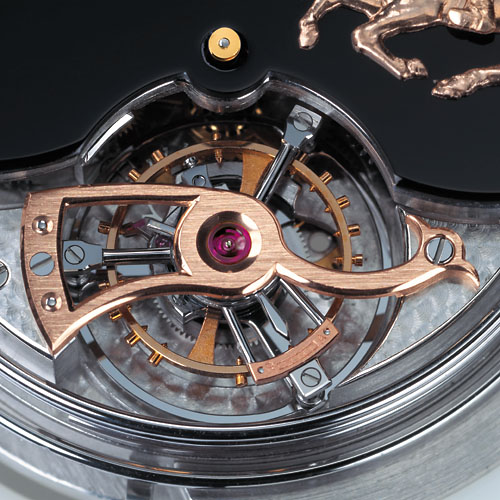
Finally, as a world premier, the 'Khan' does not simply strike monotonous sequences of sounds when a full or half hour passes. Not very loud, but in perfect harmony the melody of the world's most famous striking clock, the 'Big Ben' in London, is played by the tiny hammers on four metal springs.
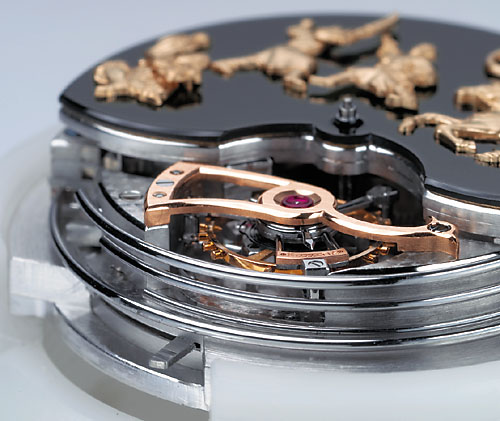
The view from the side reveals the four springs which are needed for the Westminster chime melody
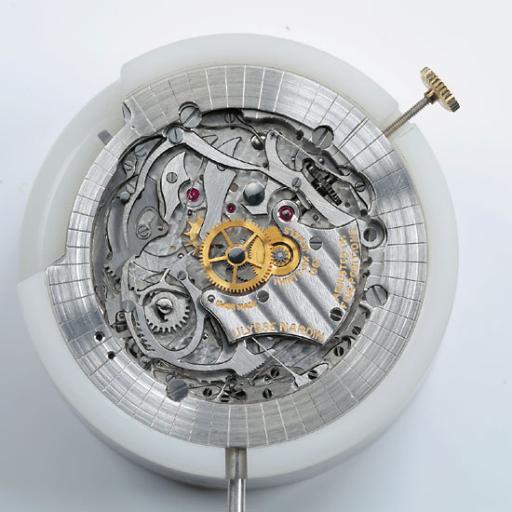
The movement from the rear
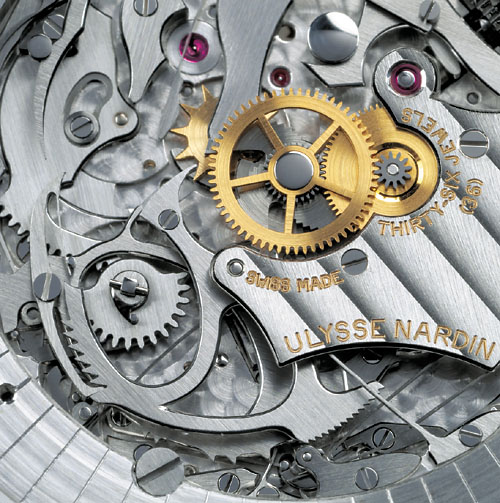
The detail pic shows the 'rakes' which calculate the correct number of chimes
All this is encased in 18k gold of 42mm diameter, and in spite of its repeater activation slider it is watertight down to 30 meters. Only 30 enthusiasts will get one, and the production of even that small number is estimated to last about six to seven years. Of course the effort has its price, and this is astronomically high. This is now a moment in which it pays off that Italy joined the Euro; to accommodate the sum of 871,321,500 Italian Lira it would have been necessary to print larger price tags. 450,000 Euros might fit onto the standard tags. Barely.
Marcus
WatchRap General Discussion Forum | ThePuristS Home Page All photos are Ulysse Nardin stock photos, courtesy of Ulysse Nardin SA
Copyright April 2002 - Marcus Hanke and ThePuristS.com - All rights reserved. No reproduction, in part or in whole, is allowed without the express consent of the author or ThePuristS.com
This article was written for non-commercial reference and entertainment purposes only, and no claims
or warranties are made, expressly or implied, for absolute accuracy of
statements or specifications, although considerable efforts have been made to ensure factual
correctness at the time of writing. All trademarks and copyrights remain the possession of their respective registered owners.